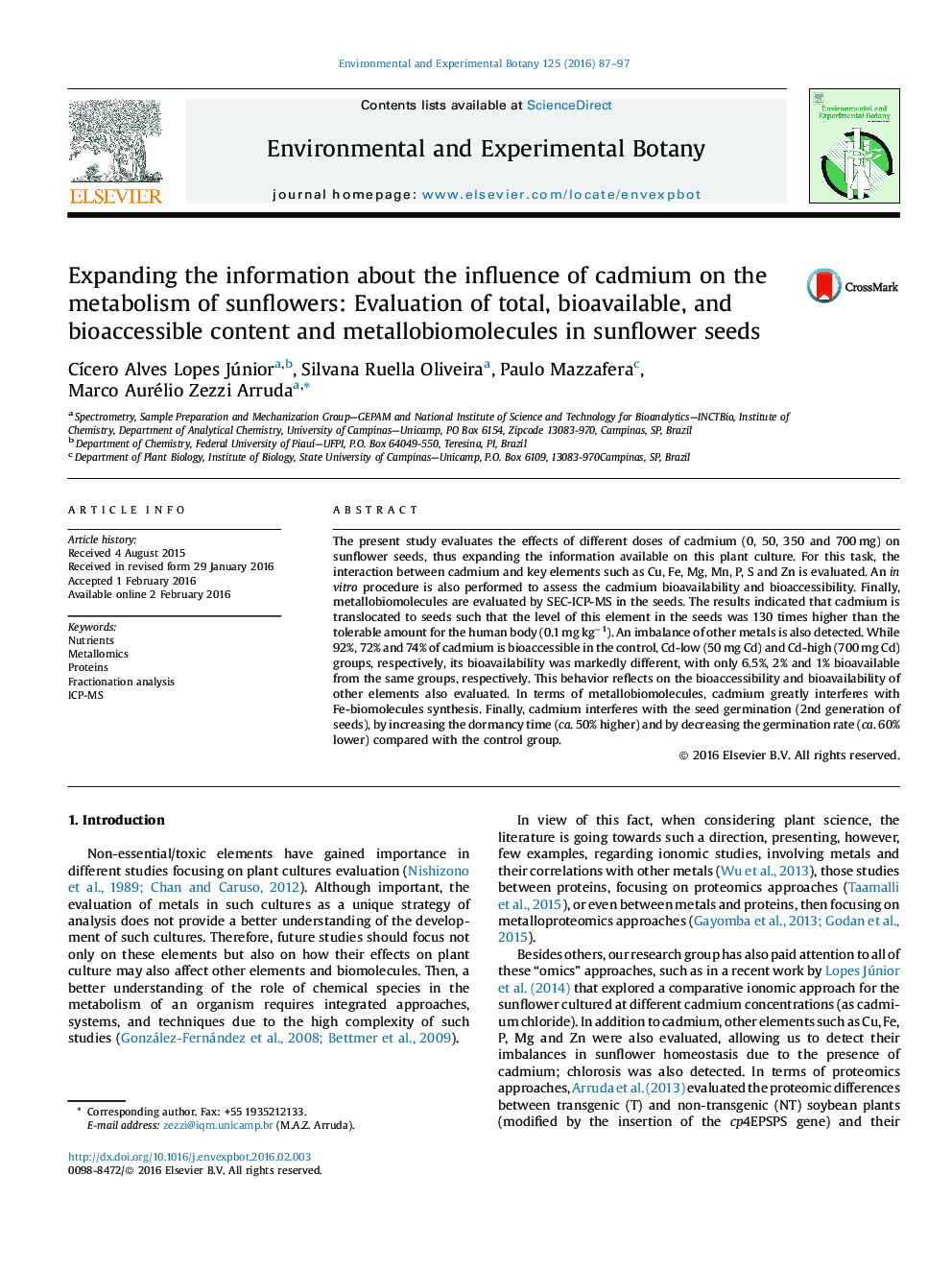| کد مقاله | کد نشریه | سال انتشار | مقاله انگلیسی | نسخه تمام متن |
|---|---|---|---|---|
| 4554096 | 1628052 | 2016 | 11 صفحه PDF | دانلود رایگان |
• Effect of different Cd doses on sunflower development is evaluated.
• Interactions between Cd and Cu, Fe, Mg, Mn, P, S and Zn is demonstrated in this work.
• An in vitro procedure is proposed to assess the Cd bioavailability/bioaccessibility.
• Metallobiomolecules are evaluated by SEC-ICP-MS in the seeds.
The present study evaluates the effects of different doses of cadmium (0, 50, 350 and 700 mg) on sunflower seeds, thus expanding the information available on this plant culture. For this task, the interaction between cadmium and key elements such as Cu, Fe, Mg, Mn, P, S and Zn is evaluated. An in vitro procedure is also performed to assess the cadmium bioavailability and bioaccessibility. Finally, metallobiomolecules are evaluated by SEC-ICP-MS in the seeds. The results indicated that cadmium is translocated to seeds such that the level of this element in the seeds was 130 times higher than the tolerable amount for the human body (0.1 mg kg−1). An imbalance of other metals is also detected. While 92%, 72% and 74% of cadmium is bioaccessible in the control, Cd-low (50 mg Cd) and Cd-high (700 mg Cd) groups, respectively, its bioavailability was markedly different, with only 6.5%, 2% and 1% bioavailable from the same groups, respectively. This behavior reflects on the bioaccessibility and bioavailability of other elements also evaluated. In terms of metallobiomolecules, cadmium greatly interferes with Fe-biomolecules synthesis. Finally, cadmium interferes with the seed germination (2nd generation of seeds), by increasing the dormancy time (ca. 50% higher) and by decreasing the germination rate (ca. 60% lower) compared with the control group.
Figure optionsDownload as PowerPoint slide
Journal: Environmental and Experimental Botany - Volume 125, May 2016, Pages 87–97
